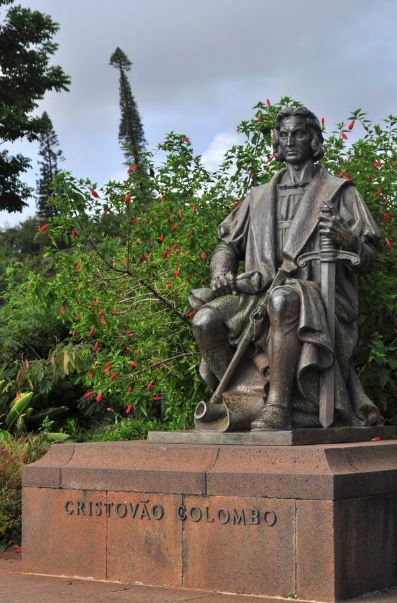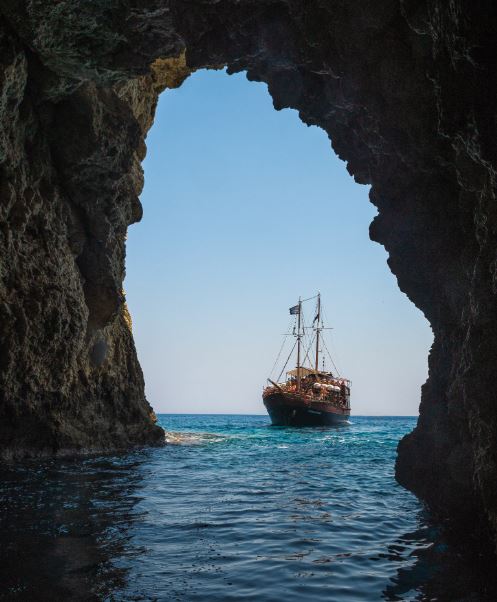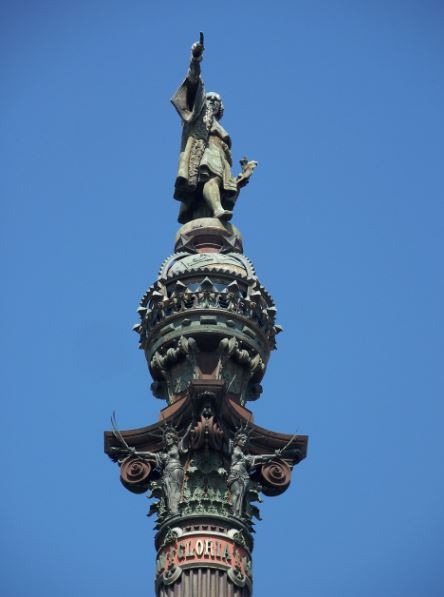Everyone in the United States knows the name of Christopher Columbus. He is mostly credited with the discovery of America, even though he might not be the first European to happen upon this land mass.
Christopher Columbus was an explore of Italian origin, who originally started sailing west of Europe in order to reach the islands near India. Instead, he chanced upon the Americas and triggered a whole new era of exploration. In fact, some say that it was Columbus’ journeys that led to the start of transatlantic colonization.
Trips from Spain Across the Atlantic
Christopher Columbus actually made at least four trips that started from Spain and took him across the Atlantic Ocean. These trips were taken in the year 1492, 1493, 1498, and 1502. The aim here was to go directly from Europe to Asia instead of the usual route. This idea was not a new one; it had actually been discussed by scholars and regular people since the time of the Roman Empire. Since this was the point in time when people finally started to be aware that the Earth is round,
Of course, we cannot say that Columbus was the first person to actually discover the landmass that we now call the Americas. Millions of Native Americans were already living on this continent, which was later also dubbed ‘The New World’. Once he happened upon this ‘new’ land, other explorers sat up and took notice. This started several centuries of settlers and colonizers coming into North and South America. Their purpose would be to explore the new lands, but also colonize it for their own purposes.
Why Did Columbus Make These Trips?
Christopher Columbus might have been an explorer, but he didn’t set sail on unknown paths just out of curiosity. During the 1600s and 1700s, many leaders and monarchs of European countries would sponsor seafaring expeditions for various explorers. Their hopes were that the explorers would either find new lands, new trade routes, or other means of wealth such as spices, gold, and other precious items.
Among these, the Portuguese were among the earliest people to take part in the Age of Discovery or Age of Exploration. They started their expedition in around 1420, with small ships called caravels. Due to their small size, the caravels could travel quickly along the coast of Africa, which was then the safest known route to Asia. The ships would carry not just gold and spaces, but also people captured from Africa and Asia to become slaves in Europe.
With the success of the Portuguese expeditions, other nations in Europe were ready to try out explorations of their own. At the time, it must have seemed like the Far East had untold, unlimited riches.
At the end of the 1600s, Spain had successfully expelled most of its Muslims and Jews out of its kingdom after many years of war. After that, they started to focus on exploring and conquering other parts of the world. This is where Christopher Columbus came in.
The Early Life of Christopher Columbus
Columbus was born to a wool merchant in Genoa, an Italian city, in 1451. While still a teenager, he started working on a merchant’s ship and stayed there until a pirate attack in 1476. The pirates sank the ship, but Columbus managed to make his way to the shore and then to Lisbon. There he studied subjects such as astronomy, navigation, cartography, and mathematics. Similar to other capable men in history like Alexander the Great, Columbus was hatching a lot of plans in his head.
The First Trip
By the end of the 1600s, it was almost impossible to travel to Asia from any European country by land. The land in between had all kinds of difficult terrains, while the best routes were controlled by hostile forces. This is why the Portuguese exploration was hailed with so much enthusiasm; they took the route of the water, sailing along the African coast and making sure to keep the land in sight in order to navigate.
While other nations were mostly following the same route, Columbus had the idea of sailing directly west and perhaps saving time in reaching the Asian continent. As we now know, this logic was fine but the calculations were very much off. Columbus imagined that the Earth’s circumference was relatively smaller than most of his contemporaries said it was. This is why he decided to sail west and get a new Northwest passage for the purpose of trade, exploration, and conquest.
Columbus first talked about his plan and asked for help from officials based in England and Portugal. However, he didn’t get help with his ideas until the Spanish monarchs finally lent an ear. These were Isabella of Castille and Ferdinand of Aragon. Both of them, along with Columbus, were after fame, fortune, and exporting Catholicism to other parts of the globe.
The contract between the monarchs and the explorer stated that the latter was entitled to 10 percent of anything valuable that he found. He was also to be the governor of any discovered lands and a noble title was to be bestowed upon him.
The Ships of Christopher Columbus
The three ships that Columbus took with him upon setting out were the Santa Maria, the Niña, and the Pinta. He set sail with his crew from Spain on the third day of August, 1492. They managed to reach land on October 12th, but it was on a Bahamian island, usually believed to be the present day San Salvador. However, Columbus thought at the time that they were in the East Indies. This part of the world is now called the Caribbean. Columbus sailed here from one island to the other, searching for precious items such as gold, pearls, spice, precious stones, and anything else of value.
By January of the following year, he hadn’t found much. At that point, he left some of his men in a settlement and returned to Spain.
During this trip, Columbus had kept a very detailed record of the journey from August 3 to November 6th. He even mentioned the wildlife, the weather, and the crew’s moods on different days. He also wrote down details about the local people in the new islands and was of the opinion that they should become slaves. His diary even mentions that since the natives had no iron and didn’t even know what a sword was, it would be easy to subjugate them and make them serve the colonizers.
When he got back to Spain, Columbus gave his diary to Queen Isabella as a gift.
The Later Voyages
Around six months after Columbus came back to Spain, he went back to the Americas. There, he saw that the settlement had been destroyed. He left his brothers, some of the crew members, and a lot of enslaved native people to rebuild the settlement and headed further west.
His aim was again to find precious items such as gold. His crew also included several indigenous enslaved people. Instead of riches, he sent 500 slaves to Isabella of Castille. However, the queen wasn’t pleased with this ‘gift’, as she deemed that any discovered people were subjects of the Spanish Kingdom and hence couldn’t become slaves. She immediately returned the slaves and showed her anger.
After a few years, in 1498, Columbus sailed the Atlantic ocean yet again. He got to the mainland of South America and the place we now call Trinidad. Then he went back to his original settlement, where the crew members had revolted against the mismanagement and cruelty of Columbus’ brothers. Things got so bad that the authorities in Spain had to appoint someone else as the governor. The native population there was called the Taino; they were forced to work for the Europeans, looking for gold and working on plantations. These people were mostly destroyed; Columbus was placed under arrest and chained. He was then brought back to Spain.
The Last Voyage
By 1502, Columbus was cleared of the most major charges against him. However, he wasn’t able to retain his titles. Columbus was now also showing signs of aging, but he still convinced the Spanish monarchy to send him on his last trip on the Atlantic Ocean.
On this trip, Columbus managed to reach Panama but had to abandon two ships due to storm damage, hostile natives, and other factors. He finally had to return to Spain without any bounty.
The Columbus Legacy
Contrary to popular belief, Columbus didn’t discover a whole new continent. He wasn’t even the first European explorer to search for and get to the Americas. Before him, Lief Erikson, a Viking explorer, had reached Newfoundland and Greenland in the 1200s.
However, it was due to the Columbian Exchange that the American continents were exploited and seized by the Europeans. Columbus opened the way to the transferring of animals and food across the Atlantic, along with slaves and diseases that the native populations couldn’t handle.
Conclusion
To this day, people are somewhat divided on the subject of Christopher Columbus. Some hail him as a hero and celebrate his legacy on Columbus day each year. Others criticized his actions as being for self-gain and his part in unleashing major changes on the Americas that eliminated much of the native populations. All in all, Columbus cuts a controversial figure. Another example of such a historical figure would be Peter the Great, who is also worth reading about.







